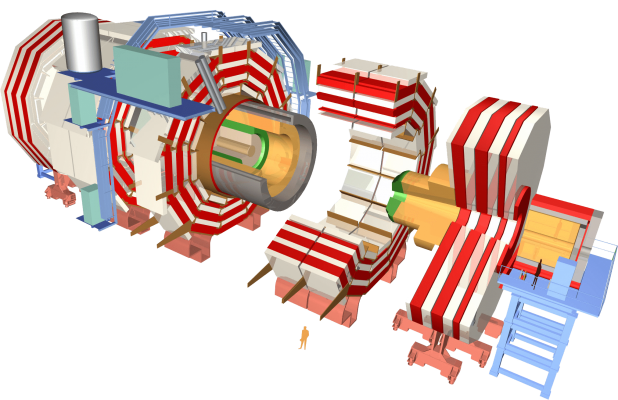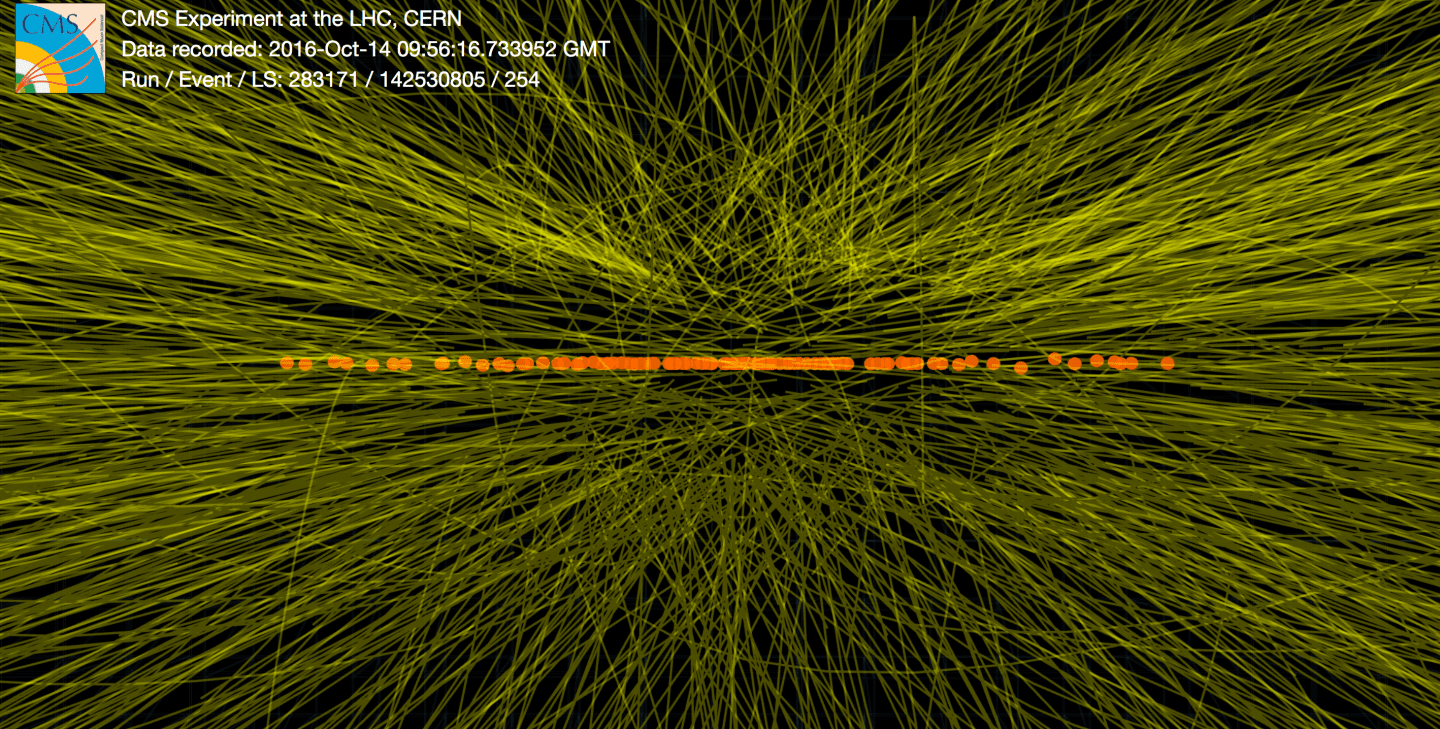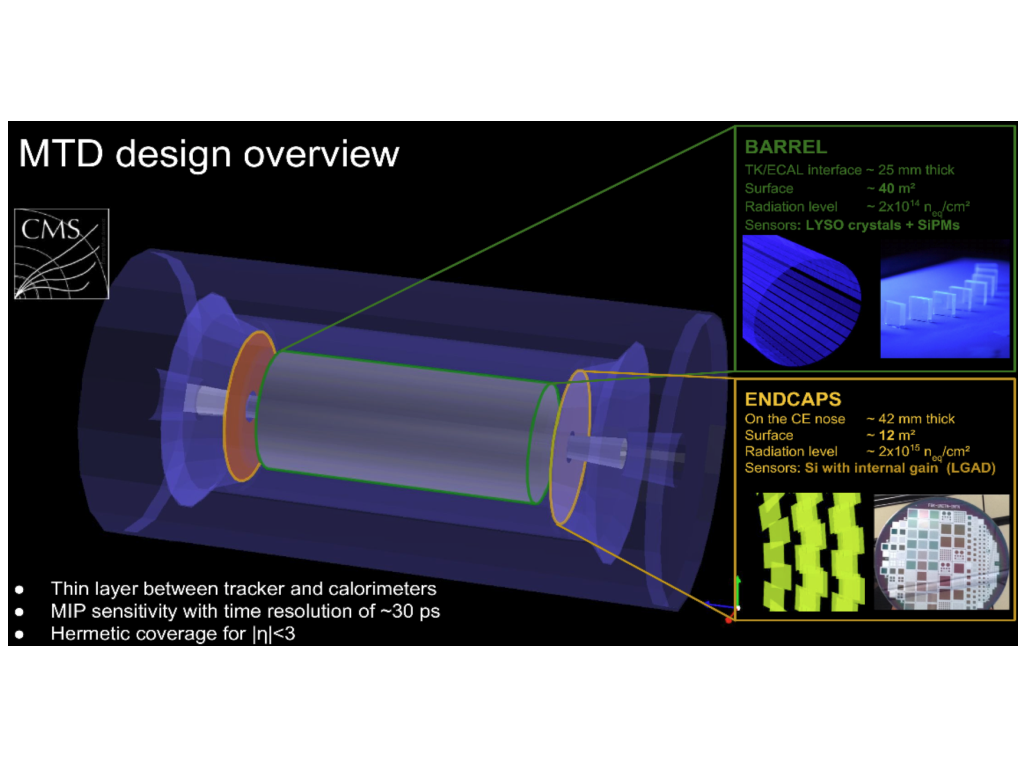
A schematic of the CMS detector. The MTD will fill the area just inside the green shell of the electromagnetic calorimeter. Source: CERN
On the detector hardware and software side, the RTU group is involved in the MIP Timing Detector project.
The large experiments at the LHC are complex machines that utilise many different particle detection methods and devices. As such, they should be thought of as a collection of numerous smaller particle detectors that work in unison to provide the physicists with the data they need for their analyses. Similarly, these experiments are not static: the sub-detectors are upgraded or replaced every time the LHC shuts off for maintenance or for upgrades of its own.
During the shutdown period planned for 2023/24, the LHC will undergo its High-Luminosity upgrade. This will allow the collider to deliver up to 200 proton-proton collisions per bunch crossing, that is, up to 200 collisions 40 million times a second. In order to fully utilise the upgrade of the LHC, the CMS will insert a new detector layer in-between its tracker and electromagnetic calorimeter - the MTD. This detector will provide the CMS experiment with the time at which charged particles traverse it at a pico-second level: a time scale on the order of one million times shorter than a blink of an eye.
Our group is involved primarily in the BTL, where we are preparing to perform quality assurance testing of the detector components. In addition, Dr. Kārlis Dreimanis is responsible for the development of the detector construction database.
Overall, through this project, we aim to grow our capacity in the development of particle detection technologies. In this area, we aim to collaborate strongly with both the University of Latvia and the Institute of Solid-State Physics, as well as to engage with and seek the support of our industry partners.
 |
 |
| A reconstruction of the primary vertices during an LHC high-luminosity run by the CMS detector. Here approximately 100 primary vertices are present. This number is expected to reach 200 during Run 4. Source: CMS/CERN. | The MTD design overview. Source: CMS collaboration. |